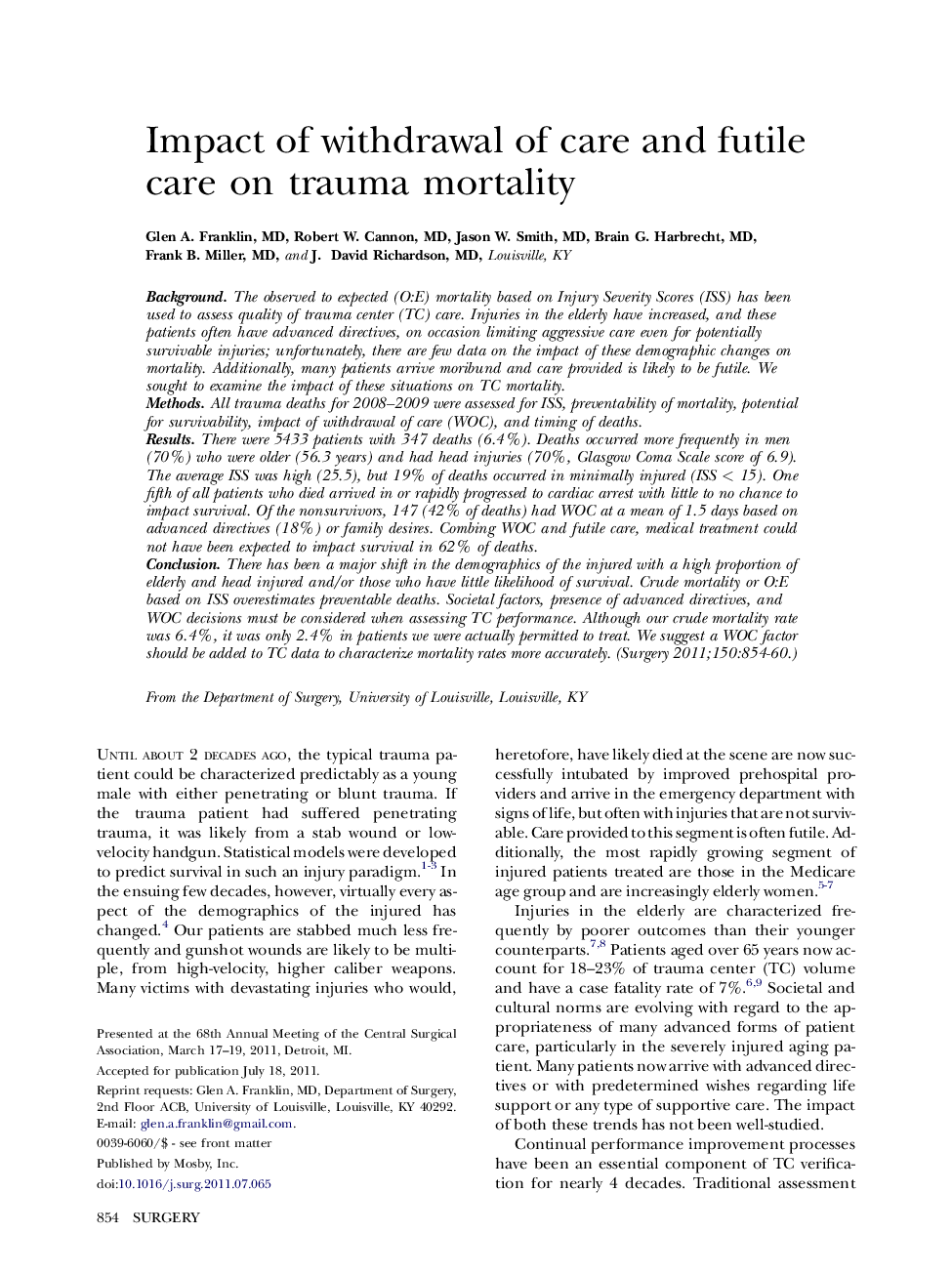| کد مقاله | کد نشریه | سال انتشار | مقاله انگلیسی | نسخه تمام متن |
|---|---|---|---|---|
| 4308590 | 1289284 | 2011 | 7 صفحه PDF | دانلود رایگان |

BackgroundThe observed to expected (O:E) mortality based on Injury Severity Scores (ISS) has been used to assess quality of trauma center (TC) care. Injuries in the elderly have increased, and these patients often have advanced directives, on occasion limiting aggressive care even for potentially survivable injuries; unfortunately, there are few data on the impact of these demographic changes on mortality. Additionally, many patients arrive moribund and care provided is likely to be futile. We sought to examine the impact of these situations on TC mortality.MethodsAll trauma deaths for 2008–2009 were assessed for ISS, preventability of mortality, potential for survivability, impact of withdrawal of care (WOC), and timing of deaths.ResultsThere were 5433 patients with 347 deaths (6.4%). Deaths occurred more frequently in men (70%) who were older (56.3 years) and had head injuries (70%, Glasgow Coma Scale score of 6.9). The average ISS was high (25.5), but 19% of deaths occurred in minimally injured (ISS < 15). One fifth of all patients who died arrived in or rapidly progressed to cardiac arrest with little to no chance to impact survival. Of the nonsurvivors, 147 (42% of deaths) had WOC at a mean of 1.5 days based on advanced directives (18%) or family desires. Combing WOC and futile care, medical treatment could not have been expected to impact survival in 62% of deaths.ConclusionThere has been a major shift in the demographics of the injured with a high proportion of elderly and head injured and/or those who have little likelihood of survival. Crude mortality or O:E based on ISS overestimates preventable deaths. Societal factors, presence of advanced directives, and WOC decisions must be considered when assessing TC performance. Although our crude mortality rate was 6.4%, it was only 2.4% in patients we were actually permitted to treat. We suggest a WOC factor should be added to TC data to characterize mortality rates more accurately.
Journal: Surgery - Volume 150, Issue 4, October 2011, Pages 854–860